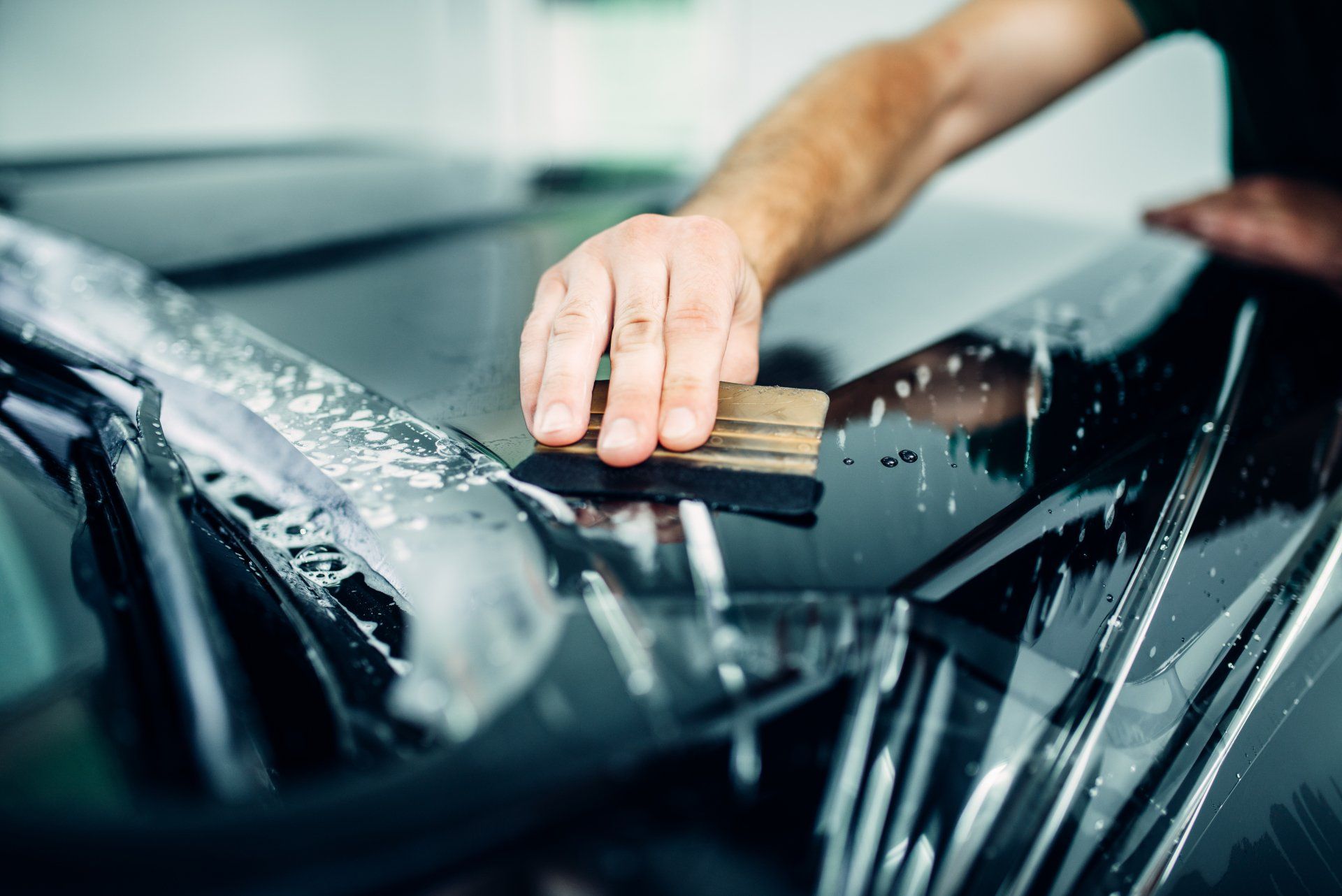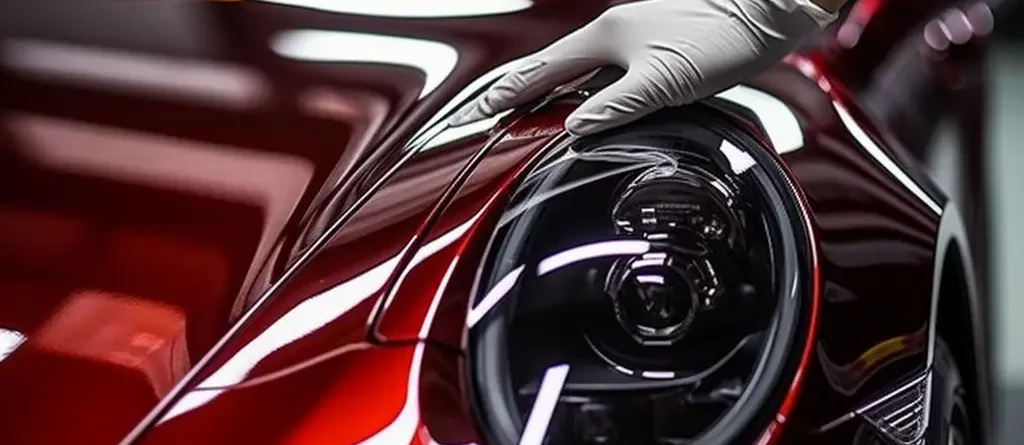Five Myths About Ceramic Coating Explained
Five Myths About Ceramic Coating Explained
Blog Article
Why Ceramic Coating Is the Ultimate Remedy for Car Paint Protection
In the world of vehicle care, ceramic coating has actually emerged as a superior alternative for paint security, supplying a level of resilience and resilience that typical approaches can not match. As we discover the diverse benefits and special residential properties of ceramic layers, it comes to be obvious why discerning car proprietors are progressively transforming to this advanced innovation for guarding their investments.
Benefits of Ceramic Coating
Ceramic coating uses numerous benefits for vehicle paint protection, making it a favored selection among automobile lovers and professionals alike. One of one of the most significant benefits is its phenomenal toughness. Unlike traditional waxes and sealants, ceramic layers create a solid, durable bond with the vehicle's surface, using defense that can last for several years with correct upkeep.
Another secret advantage is the hydrophobic homes of ceramic coverings, which push back water and impurities. This means that dirt, gunk, and other toxic wastes are much less most likely to follow the surface area, causing easier cleaning and decreased upkeep time. Furthermore, the glossy surface supplied by ceramic layers enhances the automobile's appearance, maintaining its showroom shine.
Additionally, ceramic coverings supply UV defense, guarding the paint from harmful sun rays that can trigger fading and oxidation over time. They also give a degree of scrape resistance, aiding to minimize the incident of minor abrasions. In general, the investment in ceramic coating not just preserves the aesthetic appeal of the lorry yet also improves its longevity, making it an optimal remedy for automobile paint defense.
How Ceramic Coating Functions
Comprehending exactly how ceramic coating works is basic to valuing its protective capabilities. Ceramic coatings are made up of innovative nanotechnology that develops a durable, hydrophobic layer externally of a car's paint. This layer is primarily composed of silica dioxide (SiO2), which bonds chemically with the paint, developing a strong, safety barrier that boosts the surface's resilience.
When applied, the coating fills up in microscopic blemishes in the paint, resulting in a smooth, glossy coating that not just enhances the vehicle's appearance however also gives a powerful defense versus ecological pollutants. This consists of UV rays, bird droppings, tree sap, and other hazardous substances that can degrade paint top quality.
The hydrophobic residential or commercial properties of ceramic coatings cause water to bead and roll off the surface, carrying dirt and debris with it. Eventually, recognizing these devices highlights why ceramic coating is related to as an unmatched option for vehicle paint protection. ceramic coating.

Comparing Ceramic Coating to Wax
When reviewing paint security options, several auto owners usually find themselves torn in between the enduring attraction of standard wax and the contemporary advancement of ceramic coating. Wax has actually long been the go-to selection for automobile fanatics as a result of its all-natural composition, simplicity of application, and glossy surface. It offers a momentary guard against ecological pollutants, UV rays, and dampness, typically lasting a few weeks to a few months prior to needing reapplication.
On the other hand, ceramic coating provides an advanced service, making use of nanotechnology to form a long lasting, hydrophobic layer on the vehicle's surface. This layer bonds chemically with the paint, giving a powerful obstacle versus scratches, oxidation, and dangerous pollutants. Unlike wax, which can diminish in efficiency with time, ceramic coverings are created to endure harsh problems and keep their protective buildings for an extended duration.

Long-Term Defense and Longevity
The long life of paint defense is a key variable for lots of automobile owners, particularly those that desire to preserve their car's look gradually. Ceramic coating offers substantial advantages in this regard, providing a durable guard against numerous ecological hazards. Unlike traditional wax or sealers that may last just a few months, ceramic finishings can endure for several years, typically up to a years, depending upon the product and application.
The chemical framework of ceramic coverings creates a solid bond with the automobile's paint, developing a hydrophobic layer that pushes back water, dirt, and impurities. This not only enhances the vehicle's visual appeal however also lessens the need for regular cleaning, thereby minimizing potential damages from abrasive cleansing techniques. Additionally, ceramic layers are resistant to UV rays, which aids prevent oxidation and fading of the paint, making certain that the car preserves its dynamic shade over the long-term.
Moreover, the durability of ceramic finishings suggests they are much less likely to chip, split, or peel compared to alternate choices. This long-lasting security adds to higher resale worth, making ceramic coatings an investment in both appeal and long life for any vehicle owner.
Maintenance Tips for Ceramic Coated Cars
Correct upkeep of a ceramic coated car is important to guarantee the durability and efficiency of the safety layer. basics Routine cleaning is vital; it is recommended to use a pH-neutral automobile shampoo to prevent breaking down the coating. Washing need to be done every 2 weeks or even more regularly, relying on ecological problems.

Furthermore, using a ceramic coating maintenance spray can boost hydrophobic buildings and include extra security (ceramic coating). This must be done every few months for optimum results
Inspect the coating periodically for browse around these guys indications of wear or damage. It might be time for a refresh or additional application. if water no longer grains on the surface.
Final Thought
To conclude, ceramic coating represents an exceptional option for car paint defense due to its unparalleled toughness and lasting bond with automobile surfaces. The hydrophobic properties and resistance to ecological threats substantially enhance the durability and look of auto surfaces. Contrasted to conventional wax, ceramic layers provide prolonged defense with minimal maintenance requirements. Eventually, purchasing ceramic coating not just protects the aesthetic allure of the car but also adds to its long-lasting worth retention.
Ceramic coating supplies various advantages for auto paint protection, making it a favored selection amongst auto fanatics and specialists alike. In general, the investment in ceramic coating not only preserves the aesthetic appeal look these up of the car yet additionally boosts its long life, making it an optimum option for cars and truck paint defense.
Inevitably, understanding these mechanisms highlights why ceramic coating is pertained to as an unrivaled solution for car paint protection. ceramic coating.
When evaluating paint protection options, many car proprietors usually locate themselves torn between the enduring allure of traditional wax and the modern-day advancement of ceramic coating.In conclusion, ceramic coating stands for an exceptional choice for auto paint security due to its exceptional resilience and long-lasting bond with lorry surface areas.
Report this page